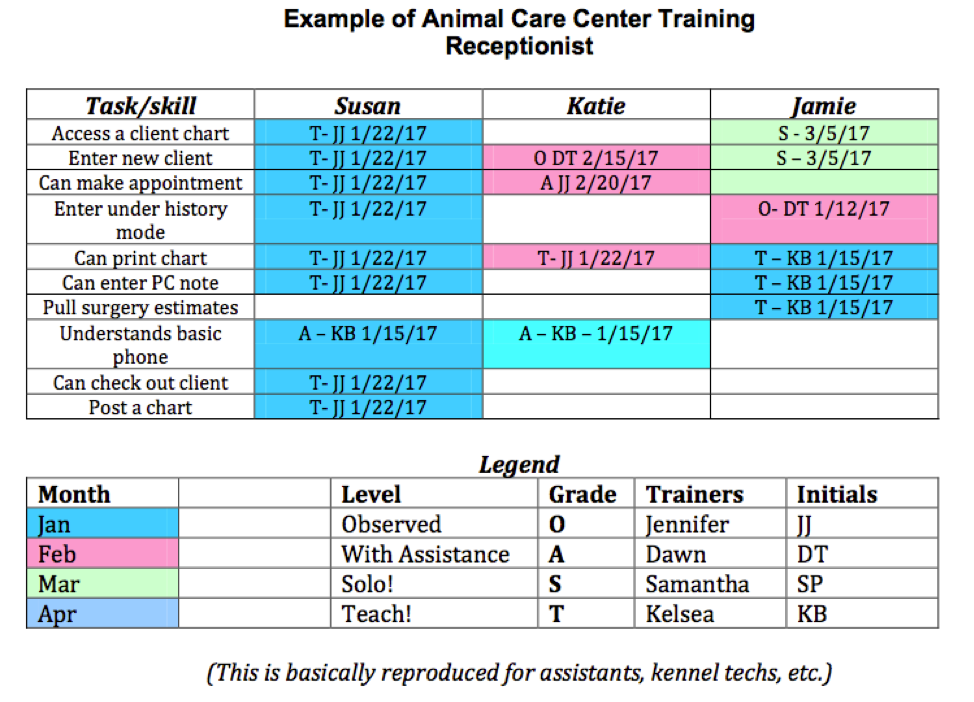MVC 2018: Staff Training Done Right
How effective is your current team training? Follow this successful practice owner’s advice to increase compliance, productivity and profitability in your veterinary practice.

After experiencing poor and frustrating customer service at various businesses, restaurants and retail stores time and time again, David Haeussler, DVM, CEO of Animal Care Centers in Ohio, decided he wanted his veterinary practices to be different.
At the 2018 Midwest Veterinary Conference in Columbus, Ohio, Dr. Haeussler spoke about the training system he created for his practices and how other practices can use similar techniques to enhance both job satisfaction and profitability in theirs.
The end goal with training, Dr. Haeussler said, is to create a low-drama, high-fun practice. “You can select [employees] for a low-drama practice if you choose,” he said, “and you can train for a low-drama practice if you choose.”
Why Train?
According to Dr. Haeussler, training has a domino effect. With better training comes a higher quality of medicine, and when more of your staff are well trained to deliver that higher quality of medicine, client compliance increases. Better compliance leads to higher productivity, and higher productivity increases practice profitability. “[Your staff] will reinforce your recommendations and what you tell the client, and increase the quality of their experience all the way around,” he said.
Current Training Logic (and Why It’s Wrong)
Current Logic: Hold regular staff meetings.
This statement has been repeated to veterinary practice owners time and time again, and it is a falsehood, Dr. Haussler said. “No. 1: You’re closing your hospital so you’re reducing your income,” he said. “No. 2: You’re trying to teach the same message to people who have vastly different amounts of experience and knowledge.”
The Reality: Meetings don’t work. An individualized training system does.
Current Logic: You have trained enough.
Veterinarians are required to obtain a certain number of continuing education hours every year, so why would staff training in your veterinary practice ever stop? “Our learning should never stop,” Dr. Haeussler said. “I’m still trying to learn new things, and the same thing should go for your staff. They should never be able to say, ‘I’m trained and that’s all there is to it.’”
The Reality: Training never ends.
Current Logic: You don’t need to follow up.
Training cannot be done unless the trainer is trained, Dr. Haeussler said, which can be an issue if there is a lack of delegation skills in your practice. If you don't delegate the leaders or managers in your veterinary practice to check up on training, it can lead to improper training and no follow up. “It seems like nobody knows how to delegate,” he said. “Very few people have mastered it.”
The Reality: Lack of follow-up leads to deterioration of staff training.
So, What Makes a Great Training System?
Just get started.
The most important thing is to go ahead and start a training system for your practice. “You’re never going to get it perfect,” Dr. Haeussler said. “Our [training system] is still growing and getting better and better every year.”
And once you begin your new training system, immediately get to work on getting your staff to buy in. In a way, you need to sell them on the benefits of being better at what they do, Dr. Haeussler said.
Decide what you want to train.
One way to figure out what you need to train in your practice is to have the entire team, from receptionists and technicians to assistants and kennel attendants, write down everything they do during their day, and then have them explain — on paper — how they do each of those things. Each job description deserves different skills training, Dr. Haeussler said, and this step will help you better understand what you need to train your staff members on.
Collect training materials.
After you collect documentation of each staff members’ daily tasks, compile and edit the lists to create personalized training for your hospital. Feel free to use various client education materials, schedule “lunch and learn” sessions or “dinner short courses,” consult management books and collect whatever else you may need to put your training system in place.
Choose the right training methods.
Every person learns differently. Think about how you will train your staff for each of the tasks you’ve planned out. Will they learn by doing, reading or listening, or will they learn visually? One word of advice from Dr. Haeussler: most people learn visually.
Decide the best way to track training.
Now that you know what you’re going to train and how you’re going to train it, a system of checks and balances should be put in place. Come up with a plan to compile each team member’s training progress. This method of tracking should be expandable, easy to understand, differentiated, easily accessible and testable.
Below is an example of what Dr. Haeussler uses in his veterinary practices to track each staff member’s training.
